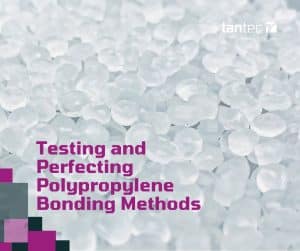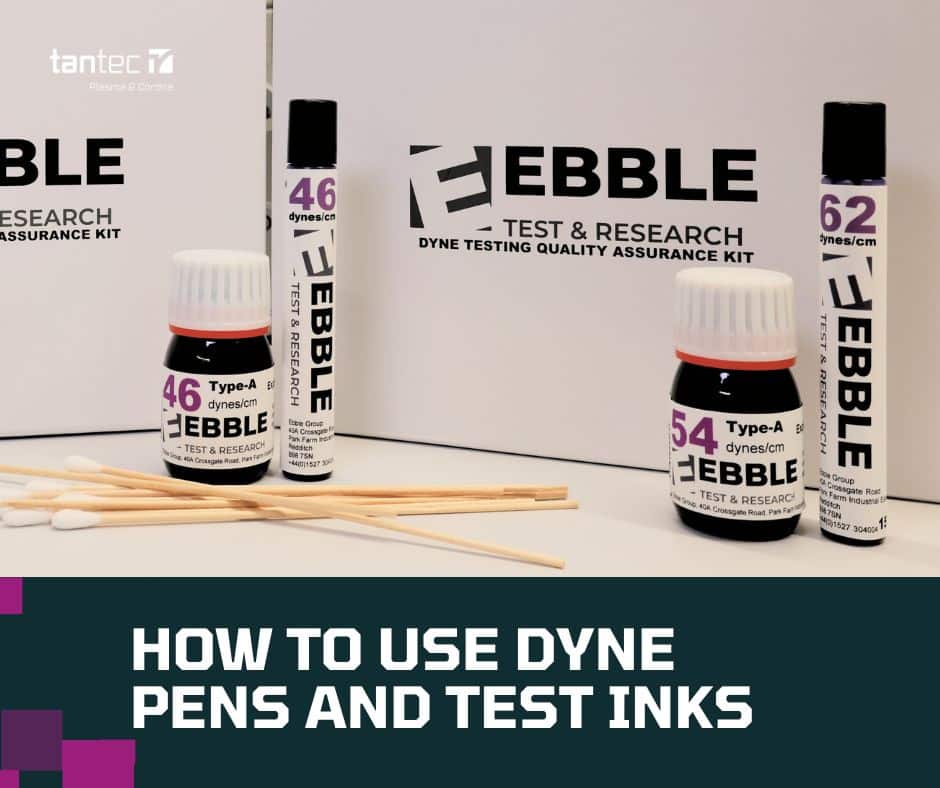
Polypropylene: Testing and Perfecting Bonding Methods
Polypropylene (PP) bonding is traditionally a difficult task due to

Read this to find out the official way to get results from Dyne Test Pens and Inks, the same test methods can be used for the Type A (purple) inks and the Type B (yellow) inks.
If you are looking for technical information, please find the Safety Data Sheet (SDS) for Dyne Pens and Inks and the bottom of the page as a download.
Dyne pens and Dyne inks contain the same liquid which is either Type A, the more dangerous, but manufactured to ISO8296 quality standards, or the more generic, but safer to use Type B inks.
ISO8296 is a standard that dictates how the inks are manufactured and will be the same globally. Type B inks are designed and manufactured by Ebble Group and could differ from other suppliers.
Both inks are made to the highest, repeatable standards and will measure the total surface energy of a material. You can use either for testing your material, but be aware they may not give the same results as they are different methods for measuring. Both are right in their own way.
Dyne Pens and Inks have safety requirements, see the safety data sheet below for full information. It is advised that gloves and goggles are used, and drinking and inhalation are avoided in all cases.
Chemicals aside, there is a dye within the inks which can cause staining.
The ink left behind will need to be cleaned, so it’s handy to have paper roll to clean up.
It is recommended that Type A are not used for Plasticised PVC, and Type B are not used for Polypropylene. In practice, we find that you can use these inks on any material and while they may not give perfect results, they will give repeatable results. For example if a 46 gives a pass and good production performance, use it.
Before going into the specific pen and ink methods, the way to observe and understand the result will be the same with both methods so we can cover this first.
Once ink is on your part, whether by the pen or the ink and swab method, you want to look at the result in the first THREE (3) seconds only. The inks are a mixture of chemicals that can react with air, evaporate or flash off over time. Looking at the result after a minute will not be the same value and will not be the correct result.
When test ink is on the surface, you will have one of four things happen:
Dyne Pens are simple to use, first, take off the cap and ensure there is ink flowing to the nib. Do this by pressing down firmly to let ink through the valve and in to the nib.
Secondly, pressing down with the pen straight up from the material, run along the surface to leave a trail of ink behind, usually 5cm to 10cm is sensible.
Observe the result, replace the pen lid and clean the material surface.
Be aware that the pen nib is in direct contact with the surface, if the surface is contaminated with release agent, processing oils or general grease, it will ruin the pen. It is advised to use the pens on clean surfaces such as freshly extruded or moulded parts that do not have oils or release fluids on them.
See the video below for examples.
Dyne Inks are a little more involved than pens, but they use a single use swab, which means that any contamination on the surface is not ruining the ink in the bottle.
Firstly, open the lid of the bottle and using the single use swabs provided, dip to ensure the whole cotton swab is covered in ink. You want a wet swab, not a dripping swab so dab excess off.
Secondly, place the swab on the material surface, usually around 45-90 degrees from the material, so you can leave a large enough width of ink behind to observe, leaving behind 5cm to 10cm of ink.
Avoid placing the swabs back in the bottles of ink to avoid contamination, we recommend placing used swabs in an old coffee can or jar to avoid staining surfaces.
See the video below for examples.
After observing each ink, you will hopefully find a value which stays as a film, and a value that beads up. This method gives you a window of surface energy, it does not give you an exact number.
Your result is that the surface energy is between the pass level and the fail level. For example, a pass of 40 dynes, and then a fail at 44 dynes means that the material is between 40 and 44 dynes.
Test inks, whether Type A or B, in pen or ink form, are a quick and easy way to find surface energy. They are best used for general measurements and for finding out if you have a low or high surface energy material. For an exact surface energy number, Contact Angle is the more technical method.
Many people use this test after being given a surface energy from a manufacturer or supplier specification – be very wary of this. Test inks come in a variety of types, and other methods such as contact angle also exist – it is likely that every single method will give a slightly different value because of the way the liquids interact with the material. It is advisable to confirm that the surface energy you have gives the performance you need. We would not recommend following a specification without confirmation.
For more information on these topics, please find more articles within our knowledge hub.
Download our guides from these links.

Polypropylene (PP) bonding is traditionally a difficult task due to

Composites are becoming increasingly important in manufacturing, whether these are

Tantec UK and sister company Ebble Manufacturing work in a
40A Crossgate Road
Park Farm Industrial Estate
Redditch
B98 7SN
Tel: 01527 304 004
Email: info@tantec-uk.com
